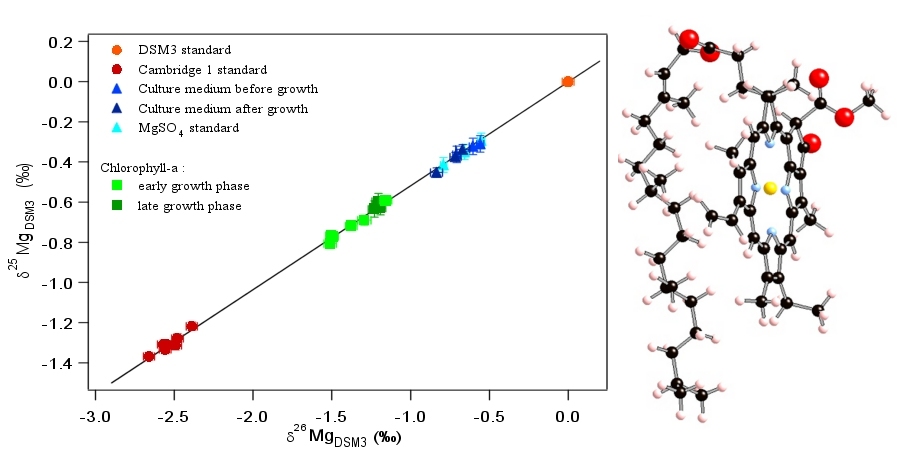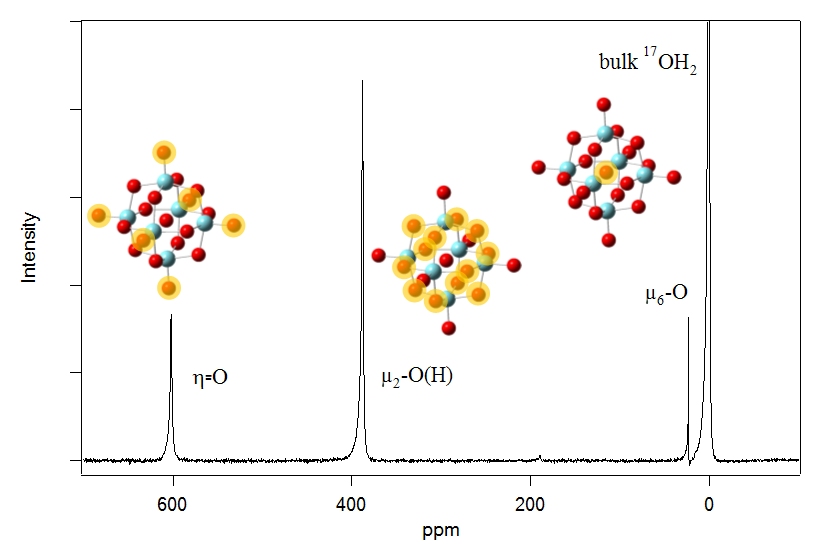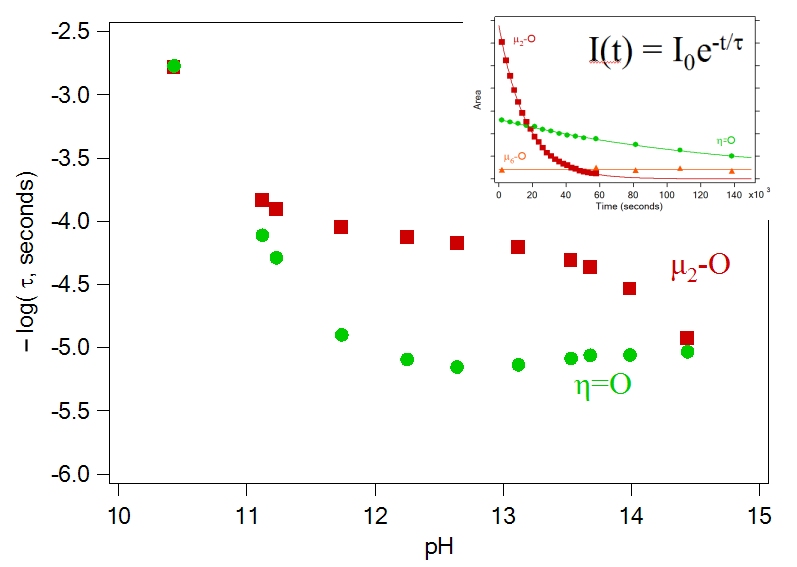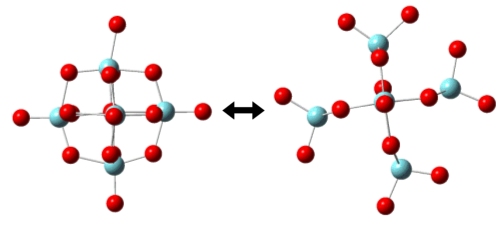
Colorado River, Grand Canyon, 2006
Jay R. Black
jayblack@ucla.edu
UCLA web page
Postdoctoral Researcher, UCLA, USA, 2007- present
Postdoctoral Researcher, UC Davis, USA, 2005- 2007
Ph. D. Inorganic Chemistry, Monash University, Melbourne, Australia, 2005
BSc (Environmental Science) Honours, Monash University, Melbourne, Australia, 1999
CURRENT RESEARCH INTERESTS
Non-traditional Stable Isotope Fractionation : Magnesium in Chlorophyll
Chlorophyll is one of the most important biomolecules for life on earth, being the primary light absorbing pigment that plants and microorganisms use to capture light for photosynthesis. Magnesium is the metal center of chlorophyll and is thus central to this process. Magnesium has three stable isotopes with a large natural abundance (24Mg : 78.7%; 25Mg : 10.1%; 26Mg : 11.2%). If a biogenic fractionation of the stable isotopes of magnesium were preserved in the chlorophyll molecule it may be possible to use the magnitude of this fractionation as a marker of environmental/physiological processes, and potentially as a tracer of the origins of photosynthetic life on Earth. In my work at UC Davis I have used a state-of-the-art high resolution multi-collector inductively-coupled-plasma mass spectrometer (MC-ICP-MS, Nu Intruments) to precisely measure the isotopic ratios of magnesium in chlorophyll extracted from various microorganisms and higher plants. Figure 1 plots the results from cultures of a cyanobacteria (Synechococcus elongatus) on a three isotope diagram, showing that the isotopic composition of chlorophyll-a is mass dependently depleted in the heavy isotopes of magnesium relative to the culture medium in which the cyanobacteria were grown. Further work is being conducted to determine the nature of this fractionation, whether is it represents a kinetic fractionation during the biosynthesis of chlorophyll; kinetic fractionation during the uptake and transport of magnesium by an organism; or an equilibrium fractionation of the magnesium isotopes in chlorophyll relative to the reservoir.

Figure 1: High-precision measurement of the magnesium isotope composition of chlorophyll-a, extracted from Synechococcus elongatus, relative to the culture medium and international standards (Black, Yin and Casey, 2006). ORTEP representation of the chlorophyll-a molecule shown to the right.
Polyoxometalate Chemistry : Hydrolysis Kinetics using 17O
Polyoxometalates (POMs) are a class of compounds with a wide variety of industrial and medicinal applications and are typically composed of group 5 and 6 metals from the periodic table. POMs are large anionic clusters where the metal centers are bridged by oxygens, a typical POM structure is the 'Lindqvist Ion', which has the general formula [M6O19]x-, where M = Mo, W, V, Nb or Ta and the value of x depends upon the metal substitutions (Figure 2). In my time at UC Davis I conducted a detailed study of the reactivity of the hexaniobate, [Nb6O19]8-, Lindqvist Ion using 17O NMR as a technique for following hydrolysis reactions at specific oxygen sites of the ion. Figure 2 shows the chemical shifts of 17O tagged oxygens of [Nb6O19]8- which is dissolved in isotopically normal water.

Figure 2: 17O Nuclear Magnetic Resonance spectrum of a 17O tagged hexaniobate compound dissolved in isotopically normal water. Relative to the bulk water signal (17OH2) the signals for the tagged oxygens sites (6 terminal oxygens: η=O; 12 bridging oxygens: μ2-O(H); 1 central oxygen: μ6-O; highlighted in yellow) are shifted upfield (Black, Nyman and Casey, 2006).
Hydrolysis reactions, and subsequent oxygen exchange at specific sites of the ion, can be monitored as the 17O enriched compound equilibrates with the isotopically normal water. This results in an exponential decay in the 17O NMR signal of sites which are reacting, from which a characteristic time for isotopic exchange (τ, see inset in Figure 3) can be measured. In a detailed study of the hexaniobate's reactivity I measuring the characteristic time for isotopic exchange of bridging and terminal oxygen sites as a function of pH, temperature and solution composition (the central oxygen site was inert under the conditions of our study). Figure 3 shows the characteristic time for oxygen exchange at the bridging and terminal sites of the molecule at 24oC as a function of pH. Interestingly under certain pH regimes (pH < 11 and pH > 14) the bridging and terminal oxygen sites exchange at the same rate as one another, whereas, under other pH conditions (14 < pH < 11) the bridging oxygen sites react much faster than the terminal sites.

Figure 3: The characteristic time (τ) for oxygen exchange of bridging (μ2-O) and terminal (η=O) oxygens as a function of pH. Temperature = 24.4oC. The upper right inset shows how τ is derived from the exponential decay of a given 17O signal (integrated area) over time. (Black, Nyman and Casey, 2006)
 These trends in reactivity can be quantitatively explained by the
acid-base chemistry of the hexaniobate ion and fit using a rate
law that
defines the rate of oxygen exchange (via H2O)
as a function of the protonation state of the molecule (pKa1
= 13.63; pKa2 = 9.92;
pKa3
= 9.35). The mechanism by which oxygen exchange occurs is not
as easy to interpret and probably takes place through a
combination of intramolecular scrambling of μ2-O
and η=O sites and
direct exchange via H2O
attack of an undersaturated Nb site in a hypothesised
'ring-opened' metastable intermediate structure
(pictured right).
These trends in reactivity can be quantitatively explained by the
acid-base chemistry of the hexaniobate ion and fit using a rate
law that
defines the rate of oxygen exchange (via H2O)
as a function of the protonation state of the molecule (pKa1
= 13.63; pKa2 = 9.92;
pKa3
= 9.35). The mechanism by which oxygen exchange occurs is not
as easy to interpret and probably takes place through a
combination of intramolecular scrambling of μ2-O
and η=O sites and
direct exchange via H2O
attack of an undersaturated Nb site in a hypothesised
'ring-opened' metastable intermediate structure
(pictured right).
RESEARCH PRIOR TO DAVIS
Copper(I) and (II) speciation in hypersaline brines and lixiviants:
My Honours and Doctoral research conducted at Monash University focussed on the formation of aqueous copper(II) and copper(I) species in hypersaline brines relevant to the geologic transport of copper and stability of copper species in lixiviant solutions containing thiosulfate, ammonia and chloride used for leaching gold from low grade ores. The main technique I used to investigate copper speciation in these systems was UV-Vis spectrophotometry, modelling the systematic changes in the d-d transition bands of copper(II) and charge transfer bands of copper(I) and (II) as their speciation changes in solutions of varying metal, ligand and pH composition.
PUBLICATIONS
2007
Black, J. R., Yin, Q.Z., Rustad, J. R. and Casey, W. H. Magnesium isotopic equilibrium in chlorophylls. Journal of the American Chemical Society, 2007. 129(28), p. 8690-8691.
Black, J. R., Nyman, M. and W. H.
Casey.
Rates of Oxygen Exchange Between the [HxNb6O19]8-x(aq)
Lindqvist Ion and Aqueous Solutions. Journal of the American
Chemical
Society, 2006. 128(45): p. 14712-14720.
2004
Fischmann, A. J., Warden, A. C., Black, J. and L. Spiccia. 2004. Synthesis, Characterization, and Structures of Copper(II)-Thiosulfate Complexes Incorporating Tripodal Tetraamine Ligands. Inorganic Chemistry, 43(21): p. 6568-6578.
2003
Black, J., Spiccia, L. and D. C. McPhail. “Towards an Understanding of Copper(I) Speciation and Reactivity in the Copper-Ammonia-Thiosulfate Lixiviant System,” Hydrometallurgy 2003, v.1, Vancouver Canada, 24-27 August, 2003, p. 183-194.
2002
Black, J., Spiccia, L. and D. C. McPhail. “Copper(I) Complexes in Thiosulfate Lixiviants for Gold Ore Processing,” Proceedings of the 6th Annual Environmental Engineering Research Event, Blackheath NSW, 3-6 December, 2002.
2001
Brugger, J.,
LINKS
University of California, Davis:
Professor William H. Casey's group page
Professor Leone Spiccia's group page
"The future remains uncertain and so it should, for it is a canvas upon which we paint our desires. Thus always the human condition faces a beautifully empty canvas."
Frank
Herbert
